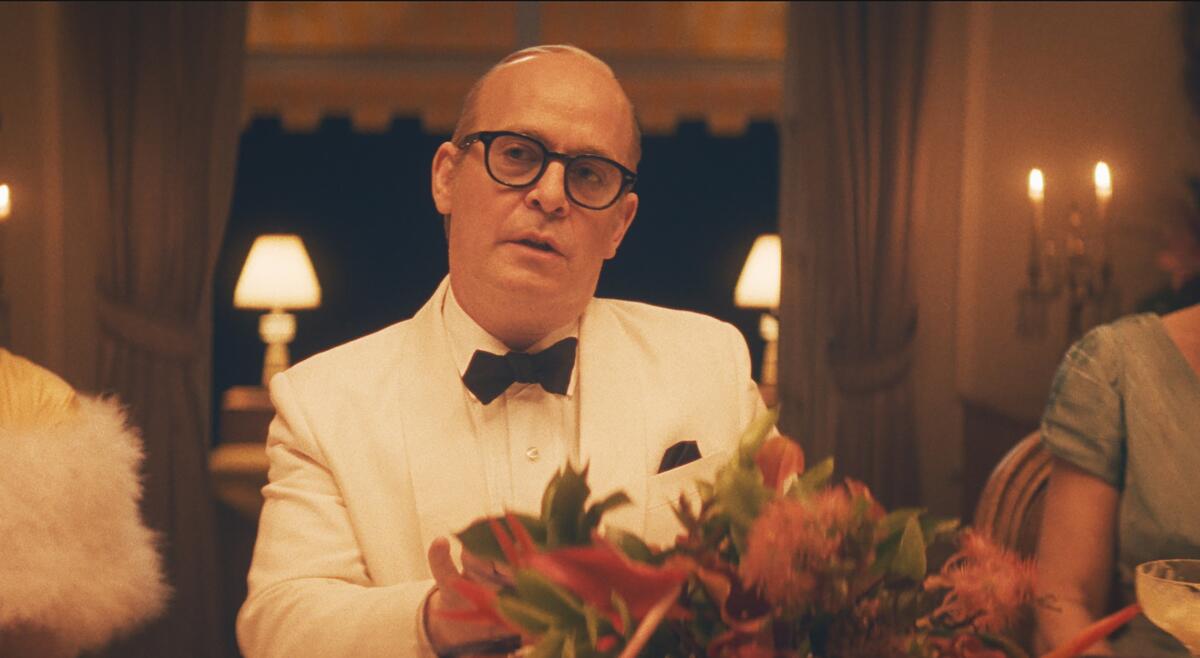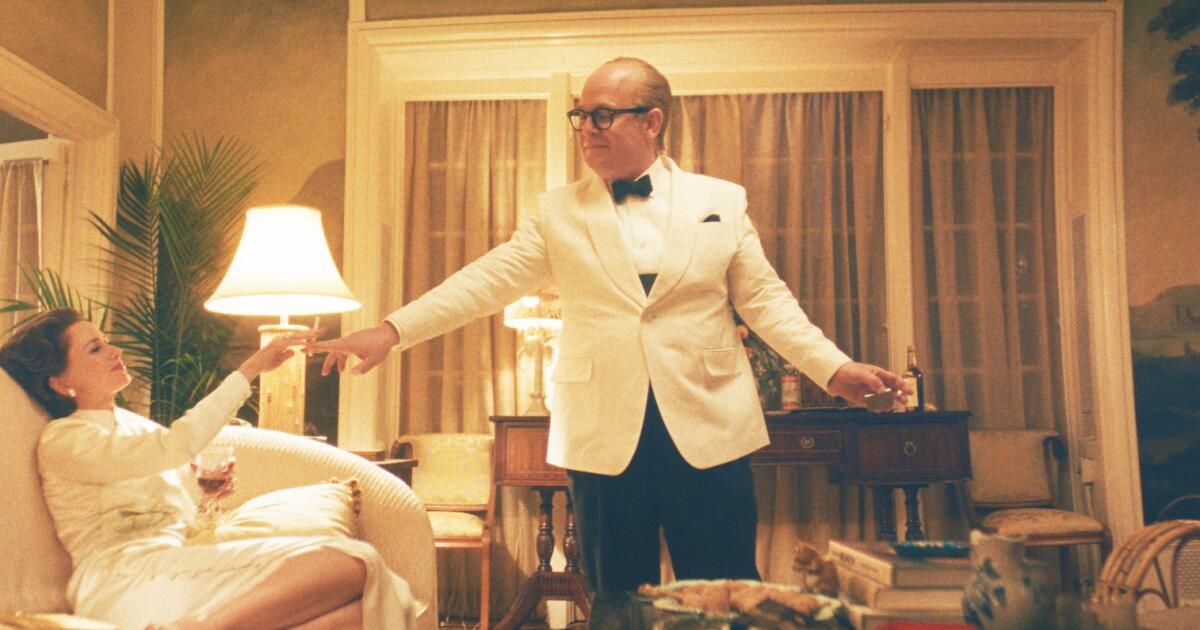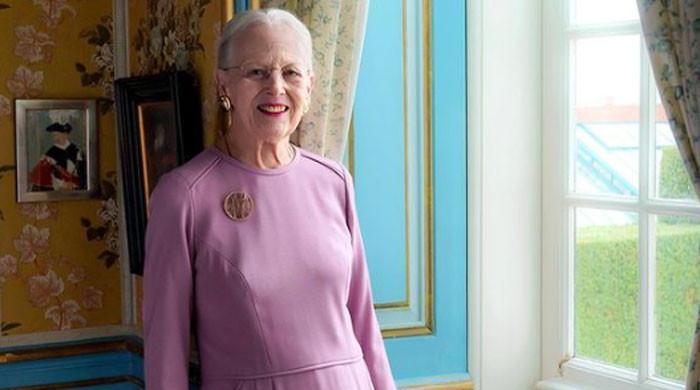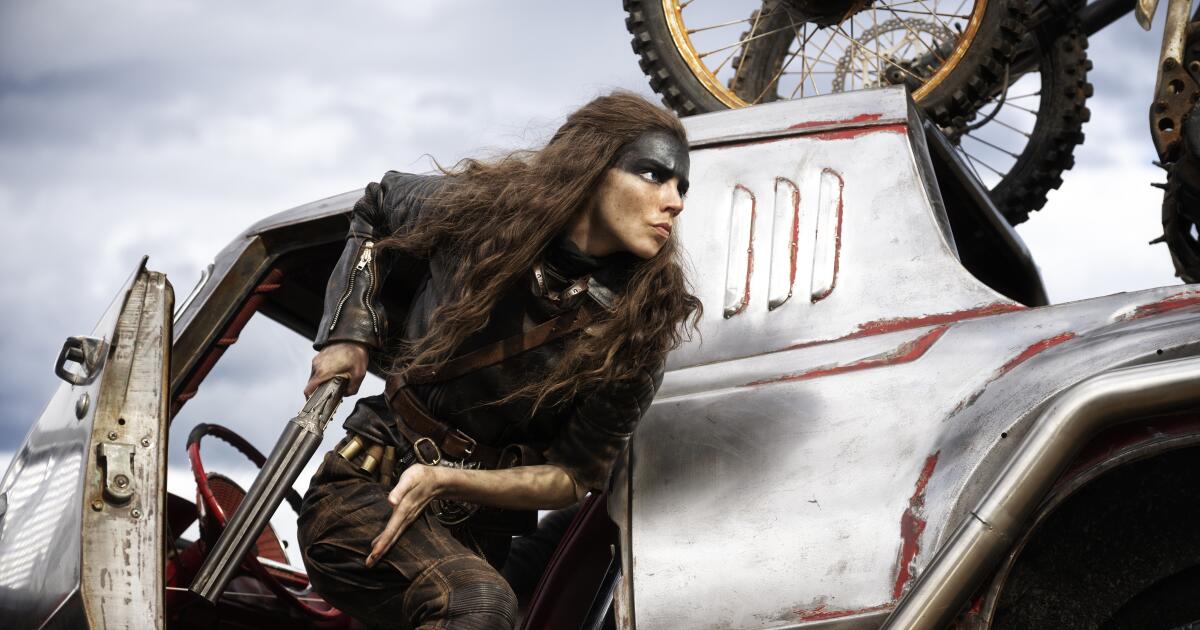“Capote vs. the Swans,” which premieres Wednesday on FX, forms the second season of anthology king Ryan Murphy’s “Feud,” following 2017’s “Bette and Joan,” as in Davis and Crawford. Written by Jon Robin Baitz and directed by Gus Van Sant, it is about the writer Truman Capote, not so much played as inhabited by Tom Hollander, and the high society women he called his “swans.” It is historically and thematically exhaustive, cleverly written, inevitably speculative, beautifully acted, beautifully staged, occasionally a little ridiculous, and probably overlong. And like a story about the dangers of gossip that in turn repeats gossip, and like the story of a writer who sometimes played with facts in the service of his writing, who plays with facts in the service of drama, inescapably ironic. But that's entertainment.
Aside from an abiding fascination with mid-century high society, which fashion magazines occasionally take a look back at, and with the publicly mercurial enigma that was Capote, the series' main attraction is its cast of actresses, some of whom became famous young and now It can be said that they are “of a certain age”: Naomi Watts, Diane Lane, Chloë Sevigny, Molly Ringwald, Calista Flockhart and Demi Moore. (Even Sevigny, a teenage It girl from the '90s underground, is now 49.) Well, time is an issue here.
The trigger for the dispute of the same name is the publication in November 1975 in Esquire magazine of “La Côte Basque, 1965”, a chapter from Capote's very unfinished and expired “Answered Prayers”, the social novel that he predicted would be a “masterpiece”. ” and he liked to compare it to Proust’s “The Remembrance of Things Past.” The piece, which included thinly veiled depictions of a pair of swans and others that were easy to identify, was a betrayal of trust whose negative reception Capote seems to have viewed with surprise: they knew he was a writer, he protested, and that he was writing this book. . But he was expelled from the New York high society in which he had been comfortably ensconced as a reliably entertaining character, companion, and dinner guest for a couple of decades.
“Feud: Capote vs. The Swans” features a packed cast of actors playing New York socialites, including Chloë Sevigny, left, as CZ Guest, Naomi Watts as Babe Paley and Diane Lane as Slim Keith.
(currency exchanges)
Watts plays Babe Paley, often described as the most beautiful and perfectly dressed woman of her time, and until “La Côte Basque,” which exposed unhappy aspects of her marriage to CBS boss William S. Paley, the soulmate of Truman Behind all the biographical vignettes and subplots, the series is essentially a broken love story between the two. (Babe also has cancer, which will give it more and more depth, as it dramatically should.) Lane plays Slim Keith, who, as Lady Coolbirth, does the most talking in “La Côte Basque,” and who will later lead the anti-Truman brigade (“Nothing in nature pretends to love you and then tries to eat you”). And as CZ Guest, the most reasonable swan and the only photographed woman with real interests (she gardens, rides horses), Sevigny brings light to what can be a dark show, despite countless occurrences.
Flockhart is Lee Radziwill, the swan with the least distinctive profile, appropriate for her position as Jacqueline Kennedy Onassis's less fabulous sister. Moore plays Ann Woodward, a would-be murderer whose story Capote tells here at a table at the beginning of the first episode and who makes up a considerable part of “La Côte Basque.” (And which may have led to a suicide.) And Ringwald is Joanne Carson, Johnny's ex-wife, who in later years provided Capote with a place to stay and work in California, although in this telling she is mostly a hook to hang from. jokes about west coast activities (meditation, rolfing, colonics) and tastes. “She buys paper lanterns at Pier One,” Truman complains.
And there's Capote's dead mother, played by Murphy player Jessica Lange, trailing clouds of gothic melodrama otherwise absent from the series. It will be said here, as in this world, that Capote can be explained in large part by his relationship with his mother, who dreamed of the social status of New York and abandoned her son in pursuit of it.
Read on its own, without context, there is not much in “La Côte Basque, 1965,” certainly nothing to suggest that it would be the basis of some kind of “masterpiece.” It is literally just gossip, slightly formulated (in some certainly striking prose), in quotes and with some names changed, but not all. (Carol Matthau and Gloria Vanderbilt appear as characters, telling stories by Cole Porter and JD Salinger.) The fact that it can be faithful to what Capote heard first or secondhand (he claimed to have an almost word-for-word memory of the conversation) speaks even less of its quality as literature. Depending on the situation or your mood, I would characterize it as fiction or nonfiction or something in between.

The series follows Truman Capote's fallout with the women of New York high society after the publication of “La Côte Basque, 1965” in Esquire magazine.
(currency exchanges)
Baitz finds ways to keep the theme of the “Fight” alive during Capote's years of exile and his alcohol- and pharmaceutical-fueled decline by having the parties talk over each other, if not to each other. (Amid the attacks, there is talk of the mutual attraction between gay men and “very glamorous women.” Truman: “We see the importance of presentation, that's how we defend ourselves.” Babe: “A homosexual won't leave you “After you reach a certain age, if anything, they elevate you higher.”) Capote's no-nonsense, if often absent, longtime sidekick, Jack Dunphy (Joe Mantello), will plead his case to Paley, as will Guest, a sort of hopeful Jiminy Cricket figure. . James Baldwin (Chris Chalk) will fly in from Paris to spend most of an episode encouraging Truman to get back to work (“You've got to finish what you started, honey!… It's your firing squad that's going to kill the Romanoffs.” ). …This is your slave revolt… your Oppenheimer bomb”) and further advising him: “You gotta get on with this alcohol thing, man!”
The series looks excellent, recreating the sumptuousness of the environment without fetishizing it. Van Sant's direction is understated, with only occasional exercises in capital-S style; he sets the stage and doesn't get in the way of the actors, who, for the most part, tend to downplay it. (I was bothered, as most will not be, by an episode covering Capote's famous 1966 Black and White Ball at the Plaza Hotel and which was supposedly filmed by real-life documentarians Albert and David Maysles, but which misrepresents his process and film philosophy. The Maysles filmed “A Visit with Truman Capote” for public television, in which he is seen being interviewed by a Newsweek reporter, reading his “nonfiction novel” “In Cold Blood” and showing to Alvin Dewey, lead investigator of the murder case he chronicles, and his wife for Manhattan. It's online, if you want to take a look at the genuine article at the peak of his success).
Although something interesting usually happens, there are times when the series becomes a little tedious, partly because the story drags on to fill the allotted time, but also because the character himself, with his circular journey through rehab, has meaningless relationships or toxic. Neediness, self-pity, and public antics can become tiresome. Baitz is best known as a playwright, and some episodes, or much of them, read like stand-alone plays; That, and the fact that the series jumps around in time in ways that aren't always perfectly clear, can make the narrative feel a little discontinuous, especially towards the middle. But it's worth staying the course, for the emotional reward.
For the record:
13:12 January 31, 2024The name of the author of “Capote's Women: A True Story of Love, Betrayal, and a Swan Song for an Era” is Laurence Leamer. Lerner was misspelled.
Although “Capote vs. the Swans” is nominally based on Laurence Leamer’s “Capote’s Women: A True Story of Love, Betrayal, and a Swan Song for an Era” (the investigation never stops with the optioned property), Baitz It goes far beyond what is established. or even disputed facts in a dream world to provide reunions and closures that life denied the protagonists. More than that, she writes new pages in Capote's voice as the writer attempts to finish “Answered Prayers” and provides him with final words that differ from those actually reported. This is problematic, you might say, if you have a problem with it. Capote, who says here, “Never let the truth get in the way of a good story,” and he certainly didn't, might have been fine with that.












